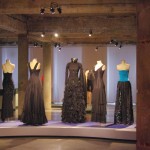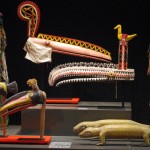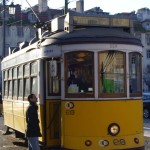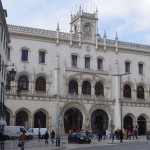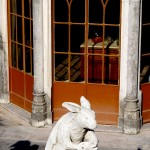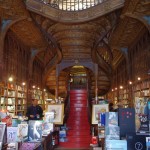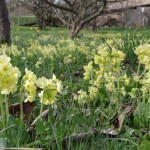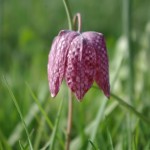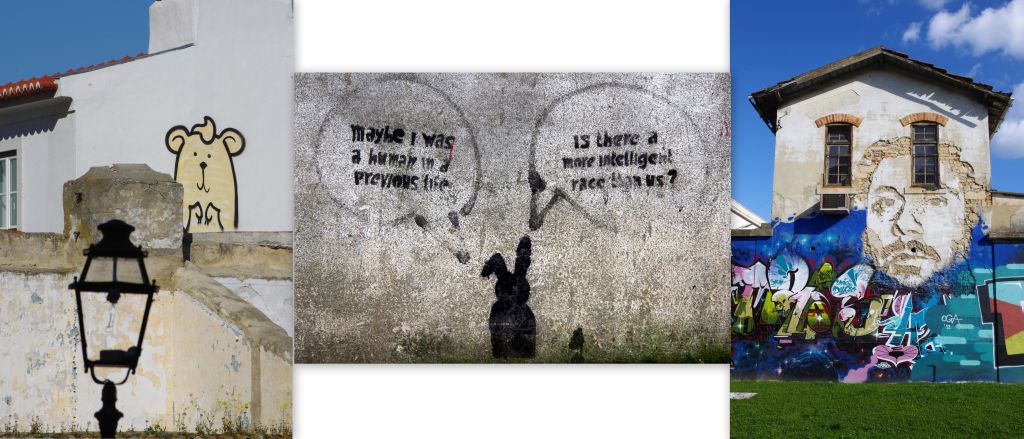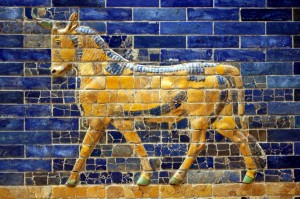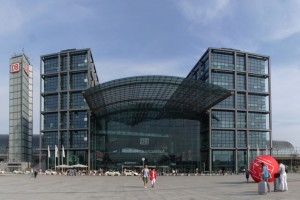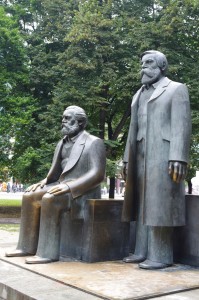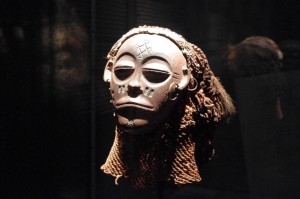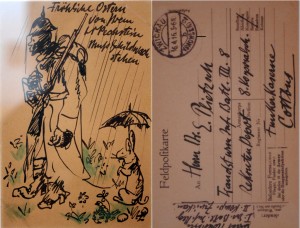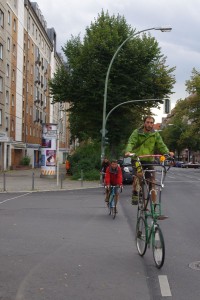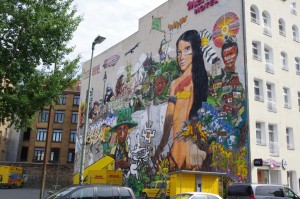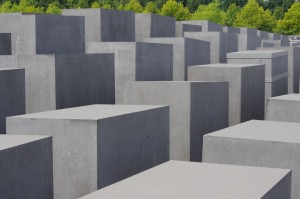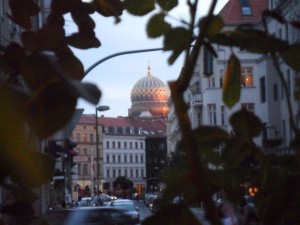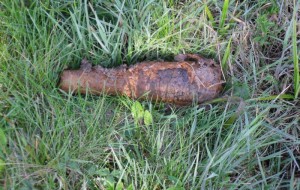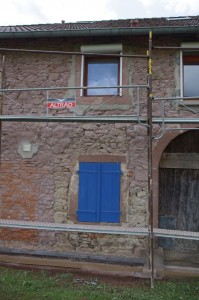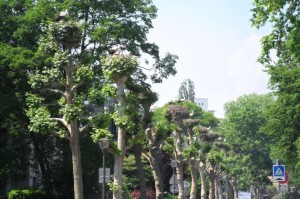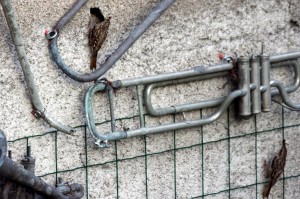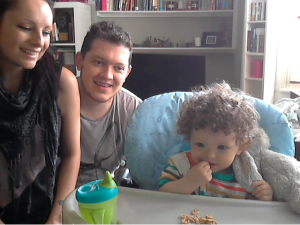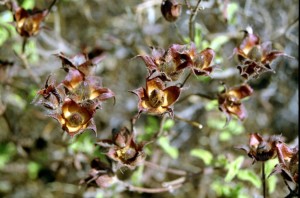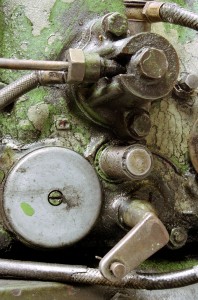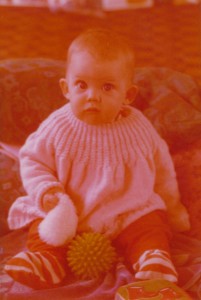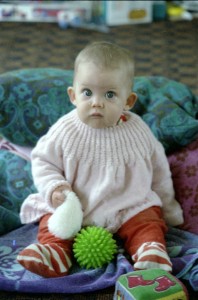To download a printable PDF version (no pictures) click on this link
E2E2013no1.pdf (five A4 pages)
There is a complete set of labelled photographs (950+) showing many more of the museums, galleries, street scenes, graffiti, etc. we saw during the Portugal trip. They are on eight web pages starting at https://blackmores-online.info/Portugal/index.html
Can you hear the rumble of a lorry coming up rue du Mont Davaux? No? False alarm. Just the EDF man in his blue van to read the meters. The only other activity outside is the steady chewing of the cows in one field, the galloping of two excitable horses in another, a pair of buzzards circling overhead and a flash of brown, possibly a hare, on the north field.
We have been getting slovenly over the protracted wet weeks of winter, often reading (books or computer screen) in bed till quite a late hour in the mornings. But today we were up and dressed soon after 7 o’clock, as French workmen can arrive at 8 o’clock to get in a solid chunk of work before the two-hour lunch break. We were looking forward to the latest (though it never turns out to be the last) of the outdoor house restoration projects. However it’s 10 o’clock and no Monsieur Pasquier and his tarmacing team. So now to relax, have a coffee and catch up on newsletters, the last one being a pre-Christmas one.
There was a chance that this newsletter could have come to you from India. However, after Christmas at Leila’s in Nottingham, we spent a longer than usual time in London (thank you again Jessica and Mark!). It was great to catch up with family and friends, especially seeing more of Jacob as he approached his second birthday. And then the hot season on the east coast of India was approaching too fast to get organised with injections, visas, etc. and still enjoy cooler weather throughout our travels. So our third Indian adventure is postponed till autumn.
Instead, we spent ten days at the end of February and start of March in Portugal. We arrived in Lisbon (by plane from Basel) and took the metro. With warnings about pickpockets circulating, I clutched my belongings possessively, but we emerged unscathed into a square at the foot of one of Lisbon’s steep hills. Our hotel was near the castle, which, like all castles, was on top of the hill, and we had just missed the clanking number 12 tram. The taxi at the head of the queue in the square was a decrepit Mercedes, long ago exhausted by the hills, and whenever it was brought to a halt in the steep, dark, narrow cobbled streets, we were uncertain whether it would lurch into rattling action once more. The light spilling out from the hotel’s glass door was very welcome, as was the news that they’d upgraded us to an enormous room, complete with sofa, armchairs, low table, writing desk, vast bed and a large terrace (the perfect room for relaxing in between sorties). Had we caught the tram, I doubt we’d have found the right stop to get off, let alone the hotel, in the dark, unlabelled streets.
As so often, it was the unexpected things that were entrancing. On our first morning we paused at what looked like a bank to ask for directions, and the woman insisted on our exploring her building which had recently been converted into a design and fashion museum with fascinating exhibits.
MUDE had indeed once been a bank (Banco Nacional Ultramarino) before being gutted, apart from the bank director’s wooden-panelled room and some mosaic murals, then left unused. Another day we’d reached the old water pumping station and museum, hot and sticky after a boring walk by the railway line, and the small static equipment and photograph exhibition was rather dull. Then, as we pushed open a door, we were engulfed by the most wonderful sounds of early choral music. In the middle of the aromatic, highly polished (floors and brass) pumping station machine room a small choir was rehearsing. The acoustics were excellent as we scrambled up the wrought iron staircases and walkways above the choir and now-retired pumps. And to further revive us, the tile museum a bit further along the railway line was in a rambling convent with an unexpectedly good café.
Another unexpected treat was the Ethnology Museum, now mainly just an archive, which recently had enough funding to display one room of exhibits; Mali puppets leered out of the darkness as individual showcases lit up at our approach. And a very informative young researcher conducted two fascinating store-room tours of Portugal’s everyday rural life implements and Amazonian artefacts.
The trams were as much fun as we expected, and we enjoyed exploiting our three-day tourist ticket to the full by riding several to the end of their lines (although, for pensioners it is doubtful if the combined museum entrance/tram ticket is cheaper than the other museum discounts available). We also stopped at the enormous tram depot, where we had some difficulty in locating the small tram museum and rousing the staff; eventually they mustered one lady to sell tickets, one man to open the door at the far end to usher us and the solitary other visitor into a waiting tram, one man to drive said tram (a beautifully re-upholstered and curtained vehicle) to some far sheds, one man to open the small shop, and one man to man the small gallery. The tram driver sat and twiddled his thumbs till be were ready to be returned to the exit. As well as the trams themselves, it was interesting to see the safety posters, the tramway corporation’s brass band exhibits and the in-house ticket printing equipment.
Our tourist ticket also entitled us to take the train out to Sintra. The railway station from which we left Lisbon was a stunning mixture of elaborate Manueline exterior, modern escalators and glass, and platform walls tiled with what looked like scenes from literary fantasies. Sintra’s railway station was more modest, unlike its palaces, over-priced tourist restaurants and cafés, and Moorish castle remains. But we enjoyed wonderful views from the Moorish walls and spotted an interesting-looking neo-gothic mansion, chapel and gardens.
Our map identified it as the Quinta da Regaleira, and on impulse we decided to find it. The terraced grounds contained the neo-gothic essentials of ferns, winding paths, follies, statuary, noisy waterfall and dank grottoes. Inside, amid hunting scenes, a pianist was rehearsing thunderously and his cascades resounded up the staircase, into the small library with its unnerving floating floor and out onto the ramparts with their gargoyles and sculpted snails. Again an unanticipated pleasure.
In Porto where, alas, our room was less lavish but the breakfasts superb, it was rainy, so we sheltered one afternoon in one of the lesser-known (to us, at least) port wine producers, Calem, near the more famous black silhouette of Sandeman; the tour and tasting was rather fun. We also took the metro about 30km to very nearly the end of the line and a small fishing village, Vila do Conde, with its dramatic aqueduct and narrow streets.
Porto also has my idea of the perfect-looking small bookshop, recently restored to neo-gothic splendour, a dairy serving great éclairs, and tall, decaying buildings, art-nouveau, tiled, and much in need of money and loving attention.
We were tourists, in cities, and at popular tourists sites, so were not seeing the dire economic situation of Portugal most of the time. And whilst there were very few people eating in the small fish restaurants on top of our hill in Lisbon, the café bars were busy with locals eating pastries and drinking coffees at all hours. However, one afternoon the trams came to a halt some distance from the main squares for the huge “Fuck the Troika” march, with protesters of all ages, classes and political beliefs united in protest against the austerity measures imposed by the IMF, EU and Central European Bank. We watched it file noisily past for some time, unable to pass through it, and sensing no end to the throng, retired to a café to put a few euros into the economy.
Before we went to Portugal we had indulged in the usual round of winter activities in and around Entre-deux-Eaux. At the mayor (and commune’s) lunch for the old folk, the food was good as ever and the wine flowed as freely as ever. The main course was described as “parmentier de canard, fondant, au beurre de Normandie, gratine, pousses de mesclun, copeaux de parmesan et tomates confites”, or, as John more succinctly translated, duck shepherd’s pie with salad. For the first time an accordionist from the village provided the music and banter, whilst the dancing between courses was as stylish as ever. The mayor sat quite near us and we realised that his lady friend is one of the delightful sisters who run the nearby La Soyotte farm museum. Later the same week the E2E monthly club for oldies had its AGM followed by lunch, – this time couscous, cooked by the retired fireman’s wife who’d gone to a lot of trouble on the desserts, making ice bowls with leaves and petals prettily encased between two layers of ice to hold the orange slices and ice cream. It was a real delight when Marcel was persuaded to go and get his accordion. He was the kindly shopkeeper back in the 1990s when we first bought our house, and has gone through a bad time since his wife died a few years ago. So it was really lovely to hear him play –he’d once recounted to us how he used to play when he was young at weddings and in their family café. Apparently he was also mayor some time before our present long-standing mayor. John sloped off after the lunch as the packs of cards and the Scrabble board came out. I always say that Scrabble-playing improves my French, though the idiosyncratic spelling of the charming and vivacious wife of one of the former Big Four Farmers doesn’t really help. We had no dictionary, so shrill appeals were made to the mayor who had once been a teacher. But, after a few glasses of wine, as her protests became shriller, it was easier to give her a free hand with spelling.
There was also the AGM of the Philomatique (which is not some tin-pot local history group, but self-styled “savants” with a good publication programme). It concluded with an interesting documentary film about St Dié at the end of the war. And, of course, there was the annual trip over the hills to the village of Saulxures, where a group of local actors feed their audience (with a kir aperitif, wine and coffee included, to get everyone in a good humour) before their performance. This year’s farce was set in an ecologically friendly house in the Vosges so had local references and some Vosgian dialect, which were much appreciated. One of the main characters was played by a local baker, who, apparently, does very good bread on other days!
One event we had not been aware of in previous years was an antiques fair in St Dié, this time held in the old police building. One dealer caught me returning to gaze at a couple of drawings, which were in fact limited lithographs of pencil drawings. He told us that the artist was Abel Pann, who worked in Paris from 1903-1913. He then went to Jerusalem, intending to settle there, but on his return to Paris to collect his things, was prevented by the first world war. He finally moved there in 1920. “My” drawings were part of a series of forty seven illustrations of the first five books of the Bible, done in 1930. Pann later did holocaust pictures and our salesman claimed he is usually bought by Parisian Jews with whom the exodus story resonates. A complete set of forty seven would command huge prices, but he would accept 200 euros for his two. Attractive as they were, we left them for any visiting Parisians to snap up.
On a more mundane note, John sampled the opticians as he had snapped the bridge of his glasses over Christmas, and his fetching epoxy resin glue repairs had not lasted.I still had a few remaining sessions with the St Dié orthoptist, prescribed by the Strasbourg ophthalmologist for eye exercises after I got my new glasses from the Ste Marguerite dispensing optician. These sessions were agreeably childish, looking from the red car to the red mushroom, or following the elephant on the stick! The highlight was when I had an exercise with a screen rabbit (like Peter Rabbit) loosing his tail and his bunch of flowers. It was clearly a treat as it wasn’t repeated. The subsequent screen fish tank and the kites were not as whimsical. We have not had nearly as much snow as the UK, but I did have to clear the garage exit several mornings before these appointments.
The snow was more of a problem on the day that ERDF (the company that owns the electricity infrastructure) were due to make the final connection for the photovoltaic panels. On arrival the man announced that he would be unable to test whether they were working with snow on the roof covering the panels, so made a second appointment to connect. That second morning he rang to confirm there was no snow. All was well. Then an hour before his arrival, the snow started to fall, covering the panels rapidly. John went out with a hose trying to wash the snow from the roof, and later got the ladders out on the snowy terrace to brush the bottom sections of the roof clear. Cold and slippery work, especially when some snow landed on his eye and went down the gap at the top of his anorak. The man said the roads were slippery too as it was new snow. Fortunately he was able to get enough minimal output to be able to check the connections and meters, but it definitely wasn’t the best of weathers for starting to produce solar energy!
We have, however had a few balmy days since our return from Portugal. One of those days we spent wandering round Colmar, seeing it with fresh eyes as we followed a tourist trail devoid of other tourists. We did, however, run into a couple we’d sat with at one of the E2E post-Christmas lunches but did not know well; although we recognised their faces, it took some time to really realise who they were. They were amazed to find two other villagers in the Bartholdi Museum courtyard! And another morning in Ribeauvillé was equally pleasant (again without many tourists despite the spring sunshine).
In a more recent outbreak of dry weather, John was able to get the potager rotavated and I dug in compost and started sowing vegetable seeds. Then the sun came out as Mark and Jessica arrived en route to Putney from Sienna (where they too had had cold and wet weather) so shared our enjoyment of the cowslips covering the orchard, and the windflowers, daffodils and first butterflies. After they left the following morning, we joined the Ste Marguerite group for a walk at the Col de Ste Marie. It was very pretty as it went down from the ridge through woods and fields, then slowly up through the woods to the Tree of Liberty, passing German bunkers, shelters, workshops, traces of the funicular, a mortar launching pit and an intriguing sign to a swimming pool (possibly to aid recovery, including from gas attacks, probably for officers), all from the first world war. However, Lucien, the leader for that day, who is a cyclist not historian, pursued his walk relentlessly, so no exploring. Somewhere to return to with a torch one day. It was the perfect day for a walk.
In the latest precious trio of sunny days, the damson and plum
blossom frothed up, and we spotted more fritillaries in our meadow than we’ve ever seen before – silently colonising amid the more noticeable ladies smock. And so far two bold scarlet tulips and six fiery orange ones have survived the rodent winter feasting in the flower garden. A colourful small spring triumph.
But now the rain has set in again, the tulips look forlorn and the tarmac team have definitely not arrived. We hold our breath.
———————————————————————

